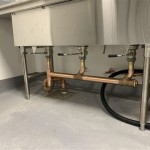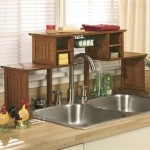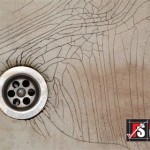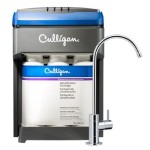Choosing the Right Drain Stopper for Your Bathroom Sink
The drain stopper in a bathroom sink is a seemingly small but crucial component of the overall plumbing system. Its primary function is to seal the drain opening, allowing the sink to hold water for various purposes, from washing hands and faces to shaving and cleaning. Selecting the appropriate drain stopper involves considering factors such as the sink's design, the material of the stopper, installation ease, and anticipated durability. Failure to choose the right stopper can lead to water leakage, difficulty in draining, and potential damage to the sink or surrounding plumbing.
The functionality of a drain stopper directly impacts the user's experience. A well-functioning stopper creates a tight seal, preventing water from slowly draining away, which is essential for tasks requiring a sink full of water. Conversely, a malfunctioning stopper can be a source of frustration, leading to wasted water and the need for frequent repairs or replacements. Therefore, understanding the different types of drain stoppers and their respective advantages and disadvantages is important for a successful bathroom renovation or simple plumbing repair.
Furthermore, the aesthetic considerations of a drain stopper should not be overlooked. While primarily functional, the stopper is a visible part of the sink fixture. Choosing a stopper that complements the style and finish of the faucet and other bathroom hardware can contribute to the overall visual appeal of the bathroom. Many manufacturers offer stoppers in various finishes, such as chrome, brushed nickel, oil-rubbed bronze, and matte black, allowing homeowners to coordinate the stopper with the existing design scheme. The material and construction of the stopper also influence its longevity and resistance to corrosion and wear, making it a significant factor in its long-term value.
Types of Bathroom Sink Drain Stoppers
Several types of drain stoppers are commonly used in bathroom sinks, each operating on a different mechanism and offering varying levels of ease of use and maintenance. These include pop-up stoppers, lift-and-turn stoppers, push-and-seal stoppers, and grid stoppers. Understanding the differences between these types is crucial for making an informed decision about which stopper is most suitable for a particular sink and user preference.
Pop-Up Stoppers: Pop-up stoppers are a popular choice due to their convenience and ease of operation. These stoppers are controlled by a lever located behind the faucet. When the lever is lifted, a linkage mechanism raises the stopper, allowing water to drain. Conversely, pushing the lever down seals the drain. Pop-up stoppers offer a clean, modern look and are relatively easy to install. However, the linkage mechanism can sometimes become misaligned or corroded, requiring adjustment or replacement. Furthermore, hair and debris can accumulate around the stopper, necessitating periodic cleaning to maintain proper function.
The pop-up stopper assembly consists of several components, including the stopper itself, a pivot rod, a clevis screw, and a lift rod. The pivot rod connects the lift rod to the stopper, and the clevis screw secures the pivot rod to the lift rod. Adjusting the clevis screw can fine-tune the position of the stopper, ensuring a tight seal when closed and complete opening when lifted. When installing a pop-up stopper, it is important to ensure that all components are properly aligned and tightened to prevent leaks and ensure smooth operation.
Lift-and-Turn Stoppers: Lift-and-turn stoppers operate by manually lifting and turning the stopper to either open or close the drain. These stoppers are simple in design and do not rely on a complex linkage mechanism. They typically consist of a stopper with a threaded post that screws into the drain flange. To close the drain, the stopper is pressed down and turned, engaging threads that hold it in place. To open the drain, the stopper is turned in the opposite direction and lifted. Lift-and-turn stoppers are known for their durability and ease of maintenance, as there are fewer moving parts that can break or malfunction.
However, lift-and-turn stoppers may not be as convenient as pop-up stoppers, as they require manually manipulating the stopper each time the drain needs to be opened or closed. Additionally, some users may find it difficult to grip and turn the stopper, especially if their hands are wet or slippery. Despite these drawbacks, lift-and-turn stoppers remain a popular choice for their simplicity and reliability.
Push-and-Seal Stoppers: Push-and-seal stoppers, also known as touch-down stoppers, operate by simply pressing down on the stopper to seal the drain and pressing down again to release it. These stoppers are relatively new to the market and offer a sleek, minimalist look. They typically consist of a spring-loaded mechanism that engages when pressure is applied to the stopper. Push-and-seal stoppers are easy to install and use, and they eliminate the need for a separate lever or linkage mechanism.
However, push-and-seal stoppers can be prone to clogging due to their design, which often features narrow openings that can trap hair and debris. Regular cleaning is therefore essential to maintain proper function. Additionally, the spring-loaded mechanism can wear out over time, requiring replacement of the entire stopper assembly.
Grid Stoppers: Grid stoppers are the simplest type of drain stopper, consisting of a fixed grid or strainer that prevents large objects from entering the drain. These stoppers do not seal the drain and are primarily used to prevent clogs. They are commonly found in sinks where water is not typically held, such as those used for washing hands or rinsing dishes. Grid stoppers are easy to clean and maintain, and they are relatively inexpensive.
However, grid stoppers offer no capability to hold water in the sink, which limits their functionality. They are therefore not suitable for sinks where water needs to be retained for tasks such as shaving or filling a basin. Despite this limitation, grid stoppers remain a practical choice for sinks where clog prevention is the primary concern.
Materials and Finishes
The materials and finishes used in the construction of a drain stopper significantly impact its durability, resistance to corrosion, and aesthetic appeal. Common materials include brass, stainless steel, plastic, and zinc alloy. The finish of the stopper can also vary, with options such as chrome, brushed nickel, oil-rubbed bronze, and matte black. Choosing the right material and finish is important for ensuring that the stopper will withstand the rigors of daily use and complement the overall design of the bathroom.
Brass: Brass is a popular material for drain stoppers due to its durability and resistance to corrosion. Brass stoppers are typically coated with a finish such as chrome or brushed nickel to enhance their appearance and further protect them from the elements. Brass is also relatively easy to machine, allowing for intricate designs and precise tolerances. However, brass stoppers can be more expensive than those made from other materials.
Stainless Steel: Stainless steel is another durable and corrosion-resistant material commonly used for drain stoppers. Stainless steel stoppers are known for their clean, modern look and are often used in contemporary bathrooms. They are also relatively easy to clean and maintain. However, stainless steel stoppers can be susceptible to water spots and fingerprints, requiring regular polishing to maintain their appearance.
Plastic: Plastic stoppers are the most affordable option and are often used in budget-friendly bathroom renovations. Plastic is lightweight and resistant to corrosion, but it is not as durable as brass or stainless steel. Plastic stoppers can also be prone to discoloration and cracking over time. However, they are easy to install and replace, making them a convenient choice for temporary or short-term solutions.
Zinc Alloy: Zinc alloy is a relatively inexpensive material that offers a compromise between durability and affordability. Zinc alloy stoppers are often coated with a finish such as chrome or brushed nickel to enhance their appearance and protect them from corrosion. However, zinc alloy is not as strong or durable as brass or stainless steel, and it can be susceptible to damage from harsh chemicals or abrasive cleaners.
The choice of finish is primarily an aesthetic consideration, but it can also impact the durability and maintenance requirements of the stopper. Chrome finishes are classic and versatile, but they can show water spots and fingerprints. Brushed nickel finishes offer a softer, more muted look and are less prone to showing water spots. Oil-rubbed bronze finishes provide a warm, rustic aesthetic and are relatively resistant to wear and tear. Matte black finishes are increasingly popular for their modern, minimalist look, but they can be challenging to clean and maintain.
Installation and Maintenance
Proper installation and regular maintenance are essential for ensuring the long-term function and performance of a bathroom sink drain stopper. Installation typically involves removing the old stopper, cleaning the drain flange, and installing the new stopper according to the manufacturer's instructions. Maintenance includes periodic cleaning to remove hair and debris, as well as inspecting the stopper for signs of wear or damage.
Installation procedures vary depending on the type of stopper being installed. Pop-up stoppers require careful alignment of the linkage mechanism, while lift-and-turn stoppers simply screw into the drain flange. Push-and-seal stoppers typically require no special tools or expertise to install. When installing any type of stopper, it is important to use plumber's putty or silicone sealant to create a watertight seal between the stopper and the drain flange. Failure to do so can result in leaks and water damage.
Regular cleaning is essential for preventing clogs and maintaining the proper function of the drain stopper. Hair and debris can accumulate around the stopper, restricting water flow and eventually causing the drain to become completely blocked. To clean the stopper, it can typically be removed from the drain and rinsed with water. A small brush or tool can be used to remove stubborn debris. In some cases, it may be necessary to disassemble the stopper to thoroughly clean all of its components.
In addition to regular cleaning, it is important to periodically inspect the stopper for signs of wear or damage. Cracks, corrosion, or misalignment can all compromise the function of the stopper and may require replacement. Replacing a worn or damaged stopper is typically a straightforward task that can be completed with basic plumbing tools. However, if the drain flange is also damaged, it may be necessary to replace the entire drain assembly.
When performing any plumbing repairs or installations, it is important to follow safety precautions to prevent injury or damage. Turn off the water supply to the sink before disconnecting any pipes or fixtures. Wear safety glasses to protect your eyes from debris. Use appropriate tools for the job and avoid over-tightening connections, which can damage the pipes or fixtures.

Pop Up Lift Turn Pull Out Stopper Bathroom Sink Drains

Need To Remove A Bathroom Sink Stopper It S So Easy

How To Adjust A Bathroom Sink Pop Up Drain 1 Tom Plumber

Sink Drains Stoppers At Com

Drain Stopper Bathroom In Brushed Nickel Rp5648bn Delta Faucet

Bathroom Sink Pop Up Drain With Overflow Large Top Lulani

How To Replace A Sink Stopper Quick And Simple Home Repair

Fixing Tricky Pop Up Drain Sink Stopper Mechanisms Efficient Plumber

How To Remove A Stopper From The Bathroom Sink Family Handyman

Sink Stopper Bathroom Drains Stoppers At Com







